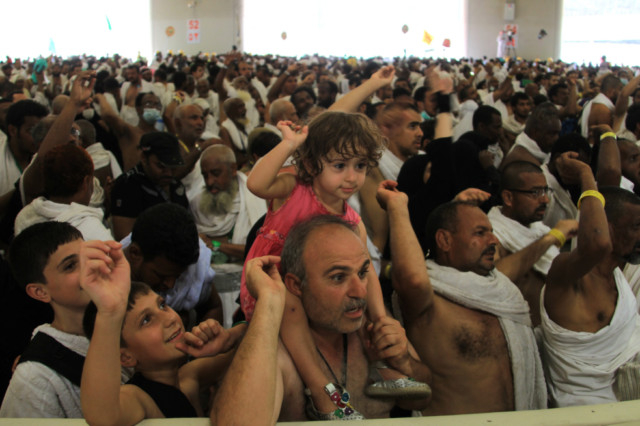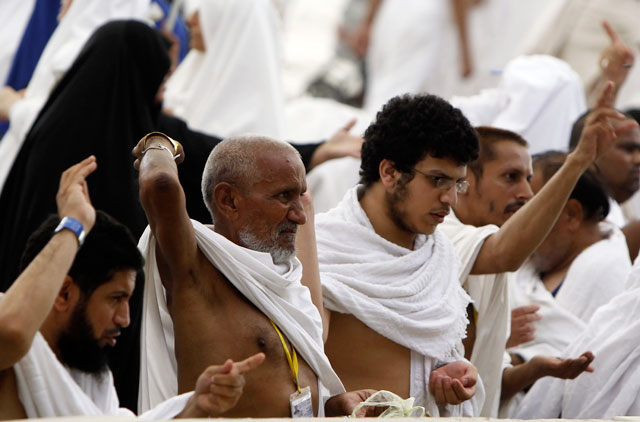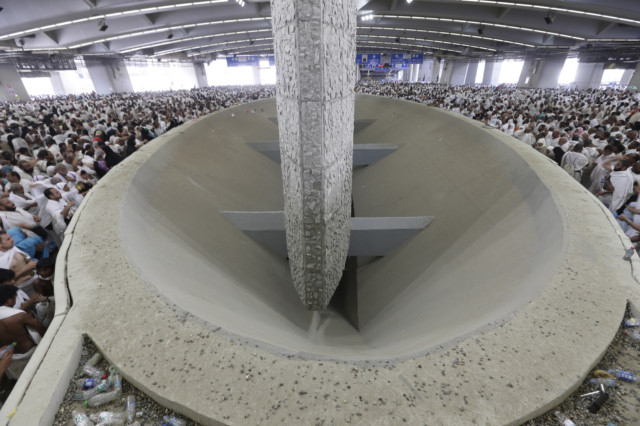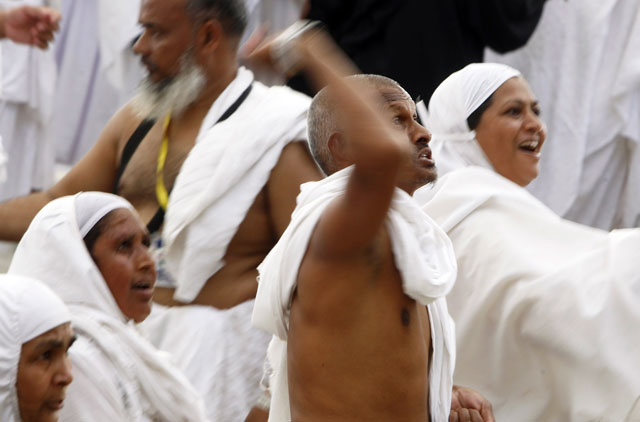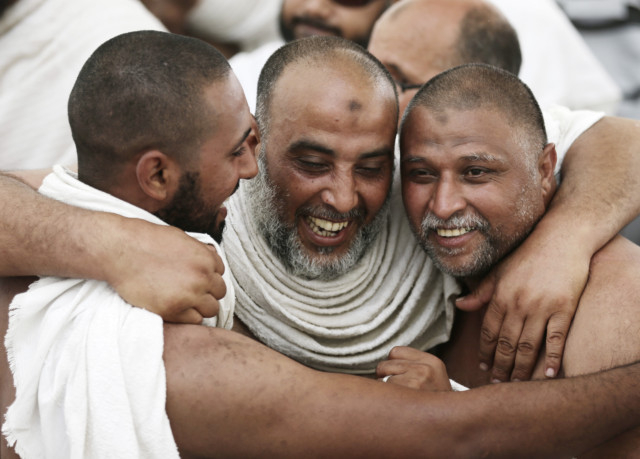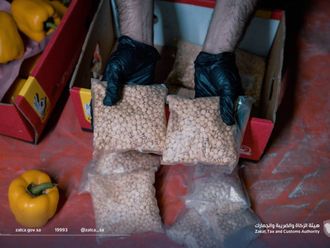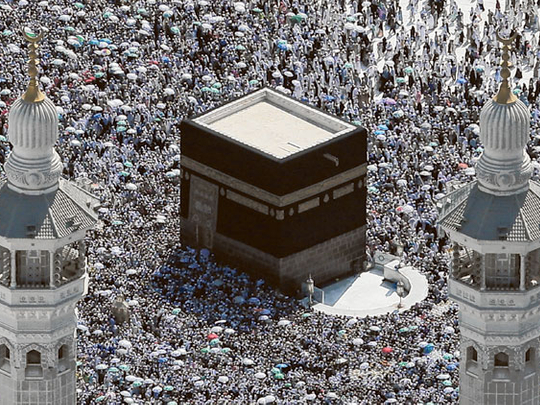
Mina, Saudi Arabia: Hundreds of thousands of pilgrims from all over the world, grouped by nationality, stoned the devil in Saudi Arabia’s Mina valley on Saturday, as the Haj reached its final stages.
Men, women and children from 189 countries, many of whom had saved up for years to make the trip, hurled pebbles at the vast stone pillars that represent Satan, shouting “Allahu Akbar [God is the Greatest].”
They walked easily from one pillar to the next, moving in groups by nationality and carrying their countries’ flags so as not to be separated in the sea of humanity.
As many prayed after and during the stoning, others were taking pictures on their mobile phones of themselves next to the pillars.
The photographing was criticised by members of the security forces who said through loudspeakers: “How are you people stoning Satan and taking pictures with him at the same time?”
In a corner, 77-year-old Afghan pilgrim Aisha Mohammad sat down panting. “There’s a sweet feeling about getting tired during Haj,” which Muslims must perform at least once in their lifetime.
“Ever since I was a child I had dreamt of standing on the Mount of Mercy in Arafat,” where the Prophet Mohammad [PBUH] is said to have given his last sermon, she said with a smile. “They were purely spiritual moments.”
“The trip to perform the Haj has cost me all the money I had,” she told AFP. “I had been saving small amounts for over 15 years and I finally sold all my jewellery to reach this place.”
However, not everyone was satisfied with the way their pilgrimage had turned out.
Walking wearily towards the pillars, an exhausted 63-year-old man told AFP bluntly, “My trip has been bad.”
Abdullah Jad, as he identified himself, said a company he had paid to organise his pilgrimage took his four-year savings and provided nothing in return, leaving him homeless and penniless as he moved across the holy sites.
“An office took the money and told me they will have everything ready for me here,” said Jad.
But “upon my arrival, I found out that I had been fooled and that I had no transport and nowhere to stay”, said Jad, still dressed in his traditional white pilgrimage robes and carrying an umbrella offered to him as part of an advertising campaign by a local telecom company.
The old man’s voice quivered as he said that he had been sleeping at the Grand Mosque in Makkah and did not have enough money left to eat. Drenched in sweat, Jad said the trip had cost him around 25,000 Egyptian pounds (Dh14,970).
Nearby, many pilgrims struggled to reach the food and water a parked truck was offering free to pilgrims.
Security forces were heavily deployed in the stoning area and first aid teams remained on high alert around the three adjacent pillars representing Satan.
The ritual, which takes place in the kingdom’s usually-deserted Mina valley and comes to life only during the annual pilgrimage, began on Friday with the Eid Al Adha holiday as the faithful began by stoning the largest pillar, Jamarat Al Aqaba.
Mina used to be the most dangerous phase of the Haj and the most problematic for the Saudi authorities, marred as it was by deadly stampedes as well as fires in tent camps.
In the past few years, however, tents have been fire-proofed and gas canisters and cooking are now banned. The stoning area has also been expanded to avoid overcrowding.
Saudi authorities have built a five-level structure around the three stoning sites, allowing for a smooth flow of pilgrims who are only permitted to move in one direction throughout the area to prevent congestion.
According to the authorities, 168,000 police officers and civil defence personnel were mobilised for this year’s Haj. For the stoning, they organised specific times of day for groups of pilgrims to perform the ritual.
Over three million registered pilgrims are taking part in the rituals which will be over on Monday. Many pilgrims, however, conclude the pilgrimage on Sunday.


